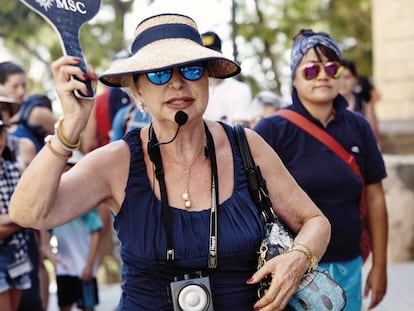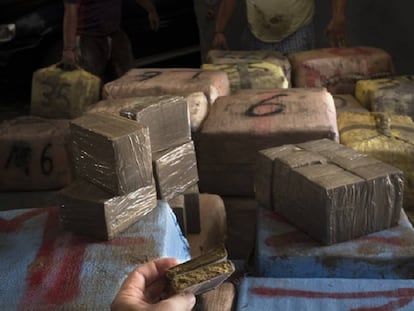The Spanish politician who was literally hated to death
Isabel Carrasco, head of the León Provincial Authority and leader of the local branch of Spain’s Popular Party, was shot in broad daylight in 2014. Three women are in prison after being convicted of the crime –Montserrat González, her daughter Triana Martínez and a policewoman, Raquel Gago. But has justice really been done?
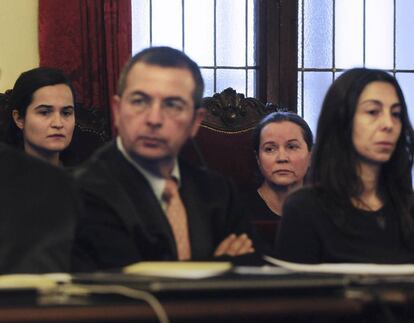
Retired policeman Pedro Mielgo and his wife were strolling across the pedestrian footbridge over the Bernesga river in downtown León, in northwestern Spain. It was a sunny afternoon in May just after 5.15pm. They passed a slim, blonde woman, around 60, who was dressed in a youthful style and walking purposefully in a pair of high heels.
“Look,” said the policeman's wife. “I think she has something to do with the regional government of Castilla y León. I've seen her on TV.”
Trailing her was a dark-haired woman whose face was obscured by a hat, sunglasses and scarf.
“That must be her bodyguard,” added the policeman's wife.
Then suddenly, they heard a sharp crack.
“We looked around and saw the blonde woman falling forward as if in slow motion and I said, ‘Ah! She’s tripped!’ I started to move to help her but my husband gripped my arm and said, ‘Shh! Don’t move!’ Something odd was obviously going on. Instead of helping the blonde woman, the dark-haired woman got down beside her and began to shoot.”
Shocked, the couple witnessed the dark-haired woman finishing the victim off with two bullets. Once she was done, she got up, covered her face with the scarf and started to walk towards them. Pedro believed that she was going to kill them too and they stood, petrified.
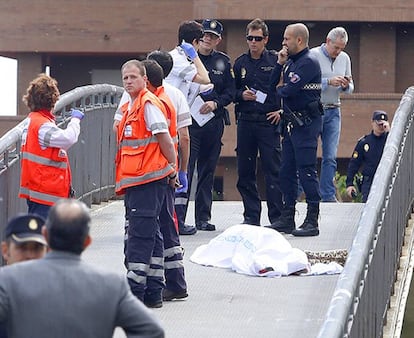
“I held my wife by the arm so she wouldn't move,” he says. “As the woman passed in front of us, she turned and glanced our way. Then she carried on walking. It was as if she had rehearsed this scene 40 times, as if she was making a movie and she had rehearsed and rehearsed until it worked… I thought it must be a hit job. Either that or it was a terrorist attack. I didn't for a minute think it would be a normal person, a housewife.”
Simple, yet extraordinary, such was the brutal murder on May 12, 2014, of Isabel Carrasco, 59, president of León’s Provincial Authority and head of the local city branch of the PP.
Familiar with the protocol due to his more than 30 years in service, Mielgo allowed the murderer to leave the scene before getting his wife to call the police and setting out after her. In the next three to four minutes – later to be fiercely disputed in court – Mielgo would watch the assassin walk up Lucas de Tuy street before losing sight of her in Plaza de Colon square and finding her again in a corner of the Gran Vía minus her hat, scarf and sunglasses.It was then that Mielgo saw a police car. He hurried towards it to describe what he’d witnessed and point out the woman who was now comfortably seated in a stationary Mercedes. “That's her! That's her!” he told them. “Be careful! She has a gun in her bag!”
The police were reluctant to believe that this well-dressed, middle-aged woman could have committed murder, and when her daughter turned up and they identified themselves as the wife and daughter of the police chief of Astorga, a town some 50 kilometers away, the police grew more skeptical still. They were even more incredulous when the weapon Mielgo mentioned was nowhere to be found. However, other witnesses soon appeared and it wasn’t long before Mielgo’s story was corroborated and Montserrat González, 55, and Triana Martínez, 36, were placed under arrest on suspicion of murdering the politician.
I wouldn’t be surprised if I turned up in a ditch Isabel Carrasco, months before her murder
How could a middle-class housewife like Montserrat González with no criminal record become a murderer? The fact that both she and her victim were members of the PP ruled out the possibility of murder on the grounds of ideological differences.
Instead, the media immediately suggested that the killing was an act of revenge. Triana had worked in a technical capacity for Carrasco in the Provincial Authority for four years. But in 2011, she lost her job to someone else – on the face of it, because she didn’t get the right grades in the public examination she sat to cement her hold on what had been a temporary post.
It sounds believable enough, but during the trial it became evident that the exam grades and agency jobs in general were linked to political favors, rather than being a fair method of seeking competent staff. This was a practice that pre-dated Carrasco but was still thriving during her reign.
In the wake of Carrasco’s untimely death, campaign events for the European elections were called off by all the main political parties in Spain and the investigation got underway. In a country where the judiciary is regularly seen as far from independent, the case was delicate to say the least.
A day after the murder, a third suspect emerged. Raquel Gago, a 40-year-old local policewoman, handed over the murder weapon to the police – a Taurus revolver, which she claimed to have found in her car inside a bag that she had lent to her friend, Triana. She told police she had seen Triana twice on the day of the shooting: once at 4.15pm at Triana’s home with Triana’s mother, and later “by chance” when she was waiting in her car for a repair shop to open in Lucas de Tuy street.
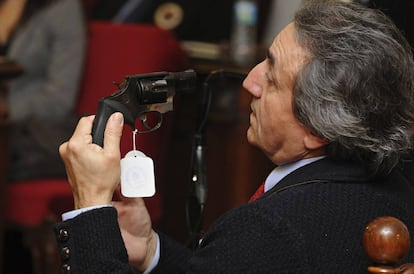
According to the court verdict, this happened two minutes after the shots were fired on the bridge. According to Raquel, Triana asked her to open the car and then she went to the fruit shop and didn't return. Raquel called her before driving off, almost 20 minutes after the crime, but Triana didn't answer. She had already been arrested.
But Raquel was unable to provide a convincing explanation for her silence during the 30 hours prior to discovering the weapon. Why had she not mentioned either to her partner or friends or to her superiors that she had seen Triana just before and just after the crime? She claimed she had suffered an emotional blackout. According to her, it seemed so incredible, she had pushed it from her mind.
Initially, Raquel was released. Her finding of the murder weapon was key to both opening and closing the case, and she was to act as a witness. In the early hours of May 14, Montserrat and Triana made a statement to the police under conditions that would subsequently be questioned by their defense lawyers during the trial.
Montserrat confessed to having killed Isabel Carrasco and described without any trace of regret how she had done it, while Triana confessed to having taken the weapon and the clothing worn by her mother in Plaza Colón, immediately depositing them in Raquel's car without her knowledge. Both mother and daughter believed that Triana would be released, as being an accessory to a crime committed by a family member is not a punishable offense. However, both remained in custody, accused of murder.
Two days later, after making a statement in court, Raquel was arrested as an accomplice to murder. By then, the police had discovered another piece of incriminating evidence – Raquel had received a call two minutes after the murder from Triana’s pay-as-you-go cell phone. That same day, the Interior Minister at the time, Jorge Fernández Díaz, stated that in political terms the crime was all cleared up.
Much later, when my team arrived in the city to start filming the documentary series Death in León, the city’s chief prosecutor Emilio Fernández said, “It was an almost perfect plan, perfectly carried out. I am convinced it could have worked.”
Fernández also declared that the motive for the crime was “the hatred that both mother and daughter felt” for the victim. The documentary series initially set out to explore how a housewife had suddenly turned into a murderer. But when we arrived in León we were shocked by the general intensity of the hatred directed at the figure of Isabel Carrasco, a year and a half after her death.
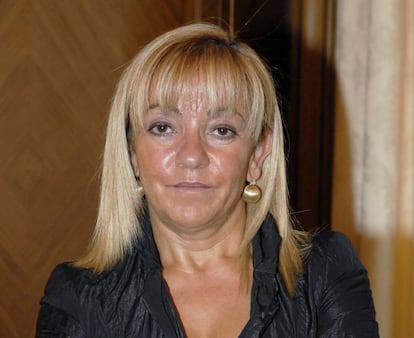
“It wasn't exactly that there was sympathy for Montserrat and Triana but nor was there criticism. And we’re talking about a murder here,” says Miguel Ángel Zamora, a journalist for the local daily El Diario de León. On the bridge, where the murder took place, graffiti appeared a few days later saying: “Here died a rotter” and “Here died an overlord.”
From humble origins, Isabel Carrasco was a serious child with a quick mind and a strong will. She became a fastidious tax inspector at an early age and, in 1987, with the support of Spain’s former prime minister José María Aznar, she began a political career as a delegate for León in the regional government of Castilla y León.
After her murder, it was hard to get people to speak openly about Carrasco. The widespread hatred towards her had the effect of silencing her few supporters while her critics kept quiet for fear of appearing to justify the murder.
Before her assassination, it was commonly held that there was only one boss in León and that was “La Carrasco”. As president of the provincial authority, she demanded loyalty and had no truck with those who had ideas of their own. Either you were for her or against her. As far as elections were concerned, she had perfected a system both inside and outside the party that gave her increasingly huge majorities, until it seemed there was no opposition strong enough to challenge her. Her real political enemies were, for a long time, people within her own party. It was something she was aware of, prompting her to keep a tight control over information within the administration and also in the press – which she censored locally. She also compiled dossiers on her rivals that could compromise their careers.
But in spite of her godlike status, she felt increasingly alone and vulnerable. Revealingly, two of her closest friends recall her telling them on separate occasions in the months before her death, “I wouldn’t be surprised if I turned up in a ditch,” and “Any day now, I’ll get a bullet through the head.”
In 2011, she hit the headlines for occupying 12 government positions, which earned her, if not 12 salaries, still an eye-watering wage. Subsequently, total strangers would insult her in the street, prompting her to hire a bodyguard to stand at the entrance of her office building.
According to the public prosecutor, “the hate both mother and daughter felt” for the victim drove them to murder
Matías Llorente, a member of the opposition who had a distant but respectful relationship with Carrasco, remembers asking if she had some kind of problem within the provincial authority or within her party. She did not reply. The next day, the vice-president asked him not to bring the subject up again, informing him that the bodyguard was being paid for privately.
None of this was mentioned at the trial, which started in January 2016 and lasted four weeks. There were two narratives: the first, proposed by the prosecutor, depicting the perfect murder plotted and carried out by the three suspects; and the other, proposed by the defense, describing the unraveling of events triggered by the victim’s alleged persecution of the murderer’s daughter.
The defense lawyer, José Ramón García, made every effort to establish that Triana had no idea what her mother was up to and that she had reacted to her crime by trying to cover up for her, hence hiding the murder weapon in Raquel’s car. Meanwhile, Raquel’s defense lawyer Fermín Guerrero argued that Raquel had not realized that Triana had put the weapon in her car as she had been talking to a parking attendant at the time and came across it in the presence of her sister the next day.
In general terms, the jury accepted the prosecutor’s version of events and the three women were convicted of Carrasco’s murder – Montserrat as the murderer, Triana as her accomplice and Raquel as an accessory.
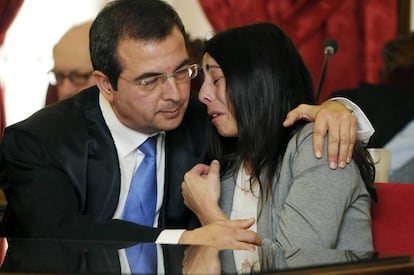
Was justice done? In many respects, the trial appeared to be a triumph of transparency – a concerted bid to show the public how well the system worked. The only doubts over the verdict seemed to concern Raquel’s role in the assassination. The judge, Carlos Álvarez, stirred up controversy when he reduced her sentence from 12 to five years. Towards the end of 2016, however, the Supreme Court aligned itself with the original prosecutor and gave Raquel 14 years while Triana got 20 years and Montserrat was handed 22.
The surprise for us came shortly before the Supreme Court’s decision, as we were tying up a few loose ends for the documentary. It was then that we managed to identify someone Triana had been in close contact with over the four and a half months leading up to the crime. Since the start of 2014, there were only two days when this person had neither talked to nor messaged Triana. On the eve of the murder, they had a conversation that lasted an hour and a half. And on the day of the crime, they spoke for around three minutes at midday.
Enric Bach, producer and co-script writer of the documentary series, had discovered the register of calls used by the police, and by cross-checking data, we discovered that she had spoken to this person almost as often as she had spoken to Raquel.
We were surprised that this number had not appeared in the court proceedings and that the person whose number it was had not been called in as a witness. But we assumed that the police must have identified the person and would offer us some explanation.

Nothing could have been further from the truth. Having identified the person in question as an advisor to Juan Vicente Herrera, the regional premier of the Castilla y León government, we called him. He confirmed his continual contact with Triana but said that the calls were strictly related to her job search. We asked if they spoke about jobs the day before and the day of the murder. He couldn’t remember, but they probably did. I expressed surprise at the number of calls, but what I found really shocking was his insistence that the police had not even been in touch with him. In a subsequent, more relaxed telephone conversation, he told me that I didn’t believe him because I wasn’t used to meeting sincere people like himself. I asked to see him in person to clear up some doubts I still had, but he didn’t want to.
As President of the Provincial Authority, Carrasco demanded loyalty and had no truck with those who had ideas of their own
We confirmed from other sources that he has been an advisor to the regional premier since 2001, but that no one knows exactly what he does.
Before wrapping up the documentary series, we shared this information extensively – with prosecutors and police, but were offered no convincing explanation as to why they had not contacted Juan Vicente Herrera, even if only for identification purposes and to rule him out as a suspect in the case. “It was a pretty big surprise. Either it was a case of collective amnesia or someone was hiding something. Anything is possible,” said Carlos Rivera, Carrasco’s lawyer, after the Supreme Court ruling.
Once the documentary series was released, we were sure that this anomaly would be investigated. But we were wrong. In the last few months, we have continued with inquiries, hoping for answers that could be incorporated into the documentary film, After Death in León, which will released in movie theaters in the fall. Having exhausted all other possibilities, we took a report to the National Police press department in Madrid toward the end of July and are still waiting for a response. The report claims that evidence pertinent to the case has been deliberately concealed. The question now is, why?
It could simply be a strategy to avoid awkward questions from the press, or to avoid contradicting the words of the Interior Minister days after the murder. Or it could be due to something else, something more serious. Whatever the reason, it seems that, in this case, politics was unable to allow justice to take its course.
Justin Webster is director and co-scriptwriter of the documentary series Death in León.
English version by Heather Galloway.
